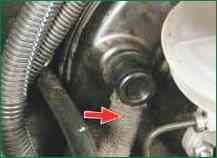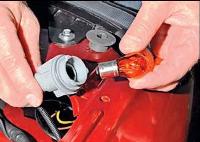In case of interruptions, the engine idles unevenly, does not develop sufficient power, consumes gasoline too much
Interruptions, as a rule, are explained by a malfunction of the injectors or an electric fuel pump (for more details, see "Engine Management System"), a malfunction of the spark plug of one of the cylinders, or air leaks into one of the cylinders.
You need to find the problem and fix it if possible.
Start the engine and let it idle. Go to the exhaust pipe and listen to the sound of the exhaust.

You can put your hand near the cut of the exhaust pipe - this way interruptions are felt better.
The sound should be smooth, "soft", of one tone.
Pops from the exhaust pipe at regular intervals indicate that one cylinder is not working due to a failed candle, no spark on it, a nozzle failure, a strong air leak into one cylinder or a significant decrease in compression in it .
Popping at irregular intervals is caused by dirty injector nozzles, severe wear or dirty spark plugs.
If pops occur at irregular intervals, you can try to replace the entire set of candles yourself, regardless of mileage and appearance, but it is better to do this after contacting a car service for diagnostics and repair of the engine control system.
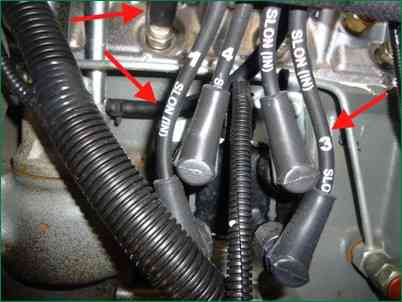
If the pops are regular, stop the engine and open the hood.
Check the condition of the ignition wires.
High-voltage wires must not have insulation damage, and their lugs must not be oxidized.
If there is damage to the wires, replace the defective wire.
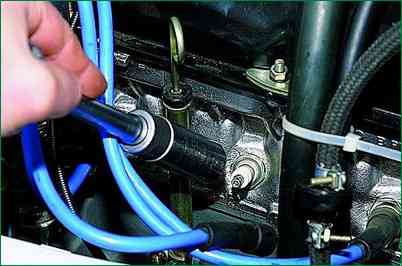
Remove the tip of the candle and unscrew the candle with a candle key
When removing high-voltage wire lugs, never pull on the wire itself.
Grab the tip directly with your hand and twist it from side to side before removing it.
Inspect the candles carefully.
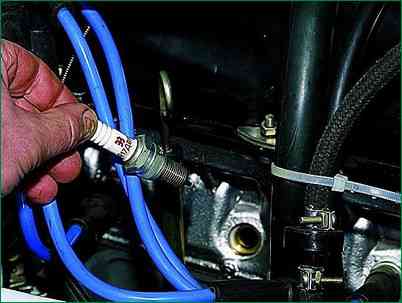
The gap between the electrodes of the candle should be 0.8-0.9 mm.
If the candle is black and damp, you can throw it away.
If all the spark plugs look good, reinstall them and connect the high voltage wires.
The order of operation of cylinders 1-3-4-2, the numbering of cylinders (1, 2, 3, 4th) is made from the engine crankshaft pulley.
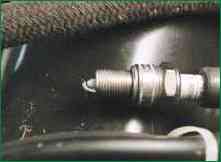
Take a spare candle. Fix it to the engine in any way.
Do not fix the candle on the oil filler neck, oil dipstick, fuel hoses.
Reliable contact of the body or the threaded part of the candle with the "mass" is optional, but desirable.
Connect the high voltage wire from cylinder 1 to the spare spark plug.
Start the engine. If engine interruptions do not increase, replace the spark plug in the 1st cylinder with a known good one.
Put on the high voltage wire and start the engine. If interruptions intensify, consistently repeat the procedure of step 6 with all cylinders to identify a faulty spark plug.
If, as a result of the measures taken, engine interruptions are not eliminated, contact a car service to diagnose the ignition system at the stand or diagnose the engine - measure compression.
Normal compression is more than 1.1 MPa (11 kgf/cm 2), a difference of more than 0.1 MPa (1 kgf/cm 2) in one cylinder indicates about the need to repair the engine.
If the diagnosis reveals a malfunction of the 3rd cylinder, remove the hose connecting the vacuum brake booster to the engine, shut it off securely and start the engine.
If the engine misfires have stopped, the brake booster needs to be replaced.
